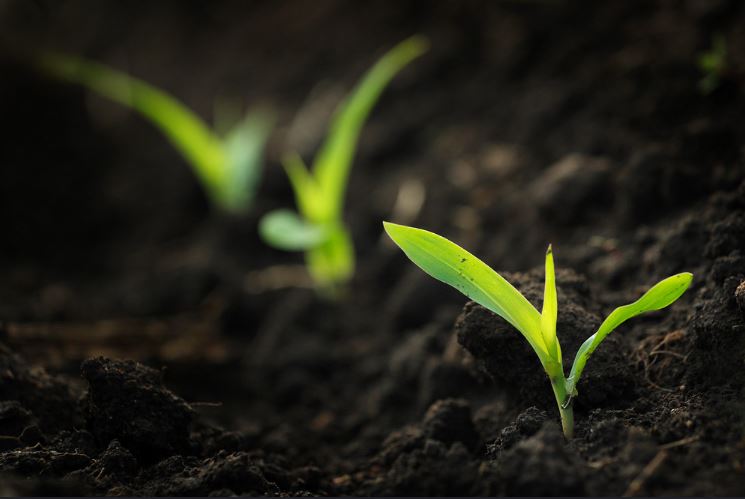



Editorial - why US farmers are worried about Bill Gates (and other non-farming land owners)
In a blogpost from the US National Farmers Union, Hannah Packman explains why farming communities are growing wary of farmland moving into non-farming ownership.You’ve likely heard the buzz that Bill Gates, in addition to being one of the wealthiest men in the world, is now also the largest private owner of farmland in the United States.
Over the past several years, the billionaire has amassed a portfolio of 242,000 acres of cropland across the country, which is about the one-third the size of Rhode Island. The news was met with concern and consternation from farmers and others, who mused about what he could possibly want with so much land. (When asked about the purchases during a recent “ask me anything” session on Reddit, he responded with: “The agriculture sector is important. With more productive seeds we can avoid deforestation and help Africa deal with the climate difficulty they already face. It is unclear how cheap biofuels can be but if they are cheap it can solve the aviation and truck emissions.”)
.jpeg)
Though Gates’ land acquisitions have received significant attention, he is by far not the only wealthy non-farmer who has been snapping up agricultural acreage. Farmland tends to continually accrue value at a faster rate than real estate or stocks, making it a smart investment for those who can afford it, even if they aren’t planning to cultivate it themselves. As a result of these investments, nearly 40% of US farmland is now owned by non-farmers, who rent it out to agricultural producers. The portion of land that isn’t owned by farmers varies widely regionally; in some areas, almost 80% of agricultural land is held by non-operators.
Not all of these owners are American; in fact, the portion of farmland that is foreign-owned has grown about 60% in the last decade, from 22 million acres in 2009 to 35.2 million acres in 2019, which is around the size of New York state. Though the trend is certainly alarming, so far, foreign entities still own a relatively small fraction of national farmland, at about 2.7% of the total.
The shift of farm ownership to non-farmers and foreign entities has some very real implications for farmers, the environment, rural communities, and the environment.
For one, it has pushed up the price of farmland. In 1970, the average acre of American farmland cost about $1,000 (that’s adjusted for inflation). In the subsequent five decades, the price has more than tripled, to $3,160 per acre. That means that the median 444-acre farm that would have cost $444,000 in 1970 is now worth $1.4 million. (This hasn’t been helped by the fact that farmland area in the US has fallen by 25% since mid-century.)
As the value of farmland has skyrocketed, small-scale and beginning farmers have been priced out from purchasing their own land or even affording leases. In the absence of smaller buyers and lessees, the largest, wealthiest operations have been able to hoard land. As things stand, just 13% of operations rent or own 75% of US farmed cropland.
The proliferation on non-farmer land ownership may have consequences for the environment too. For renting farmers, there is no guarantee that they’ll be tending the same tract of land in five or ten years. That means there less incentive to invest the time, money, and energy into implementing practices that protect soil, water, and air quality because they may or may not be around to reap the benefits. Landowners, on the other hand, often don’t have any agricultural experience and may not understand the importance of protecting natural resources. Consequently, they may be unwilling to sacrifice rental income in order to take marginal land out of production or support lessees’ conservation efforts.
Foreign land ownership contributes to these same issues, plus others on top of them. Local farmers often patronize their neighborhood cooperatives, grain elevators, and processors, supporting regional economic growth and job creation. Foreign entities, in contrast, might be more likely to direct their resources towards its own interests, taking those jobs and economic opportunities overseas instead.
Perhaps even more alarming than the extraction of wealth is the extraction of food. A foreign entity could purchase farmland with the intent to export the products grown on that land out of the country. If this is executed on a large enough scale, it could seriously undermine national food sovereignty.
Unfortunately, there are reasons to be believe this trend could intensify in the coming decades. Currently, more than 80% of US farmland is owned by someone older than 55, and 50 percent is owned by someone older than 75, meaning that about 400 million acres of land will change hands in the coming decade. If investors and foreign entities are able to outbid farmers when that happens, we could see a rapid shift towards even more non-farming landowners.

National Farmers Union (NFU) proposes the following legislative solutions to help prevent this outcome
- Ban foreign entities from purchasing farmland
- Prohibit foreign entities from participating in federal farm programs
- Offer incentives to farmland owners to encourage them to sell to farmers and aspiring farmers
- Protect farmland from further development
- Provide incentives to non-farming landowners and renting farmers to encourage them to invest in conservation practices
- Ban foreign entities from purchasing farmland
- Prohibit foreign entities from participating in federal farm programs
- Offer incentives to farmland owners to encourage them to sell to farmers and aspiring farmers
- Protect farmland from further development
- Provide incentives to non-farming landowners and renting farmers to encourage them to invest in conservation practices
- Discourage the concentration of land ownership and off-farm ownership via graduated land taxes and similar limitations
Words: Hannah Packman
TheCattleSite News Desk




